Micheltorena Bike Lane Environmentally Defective?
Long Night Ends with Serious CEQA Curveball
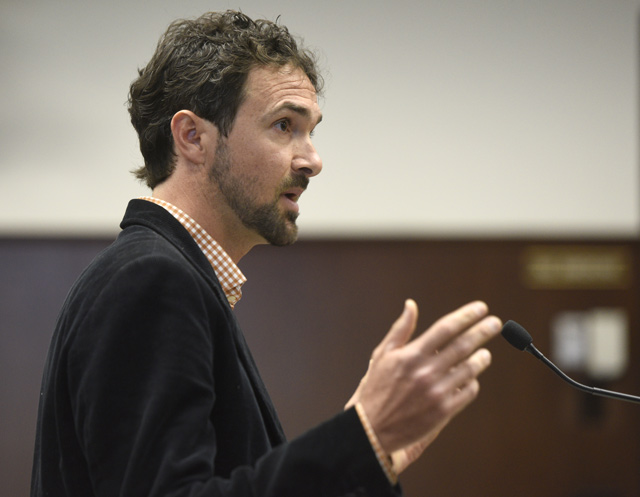
It was a very weird end to a very long night. After nearly six hours of detailed, inspired, exhausting, and mostly high-minded public policy debate over a brand- new citywide Bicycle Master Plan, the Santa Barbara City Council appeared to bestow its blessing — by a 5-2 vote — on not just the plan itself but also on the intensely controversial proposal to remove up to 100 on-street parking spaces from a four-block stretch of Micheltorena Street.
This street space would be used to create green-painted bike lanes running along both sides of Micheltorena, creating what many bicycle advocates called a crucial “spine” for the city’s bike infrastructure system. But immediately after all seven councilmembers outlined their positions, City Attorney Ariel Calonne stepped up and tossed them a serious legal curveball.
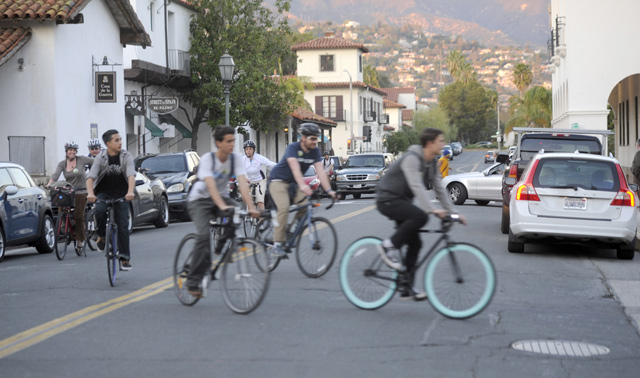
At the 11th hour, Calonne explained he needed more time to determine whether the proposed Bicycle Master Plan was, in fact, exempt — as he had asserted the previous week — from the strictures of the California Environmental Quality Act (CEQA) or whether additional environmental review was necessary. Calonne said he needed to review “whether what the city has done is appropriate,” explaining, “Additional concerns were raised yesterday and today that we have to look at.”
It’s highly unusual for such legal cautions to be made so late in the deliberative process. Typically, councilmembers are apprised in advance of what, if any, legal pitfalls lie ahead. It’s worth noting Calonne and all councilmembers had already been put on notice two weeks ago that neighborhood opponents of the new Micheltorena Street bike lanes had retained attorney Todd Amspoker of Price, Postel & Parma, who insisted City Hall was improperly claiming a legal exemption to CEQA. Much more environmental analysis, they contended, was required. At that time, Calonne had dismissed such arguments. Amspoker followed up with a letter hand delivered to Calonne and the council this Monday, making it explicitly clear that his clients — the newly formed Micheltorena Neighborhood Association — were willing to incur the substantial costs of suing City Hall over CEQA. Amspoker also pointed out City Hall would have to pay his legal fees should his clients prevail.
During a brief midnight interview after Tuesday’s council meeting, Calonne explained only, “I’ve learned new information that raises my level of concern.” He declined to elaborate on what this new information was, other than to state it came via “a confidential communication.” If Calonne determines that City Hall incorrectly claimed to be exempt from state environmental regulations, the remedy would be “some alternate form of environmental review.” Calonne said he intends to report back to the council by March 15.
For the most part, the new Bicycle Master Plan has elicited little opposition controversy. It outlines a series of 38 infrastructure projects — to be phased in over the next 15 years — designed to close “the gaps” in the city’s current system of bike lanes. The goal of the master plan is to increase the number of bike commuters from the current 6.1 percent to 10 percent in 2020, to 13 percent in 2025, and to 15 percent in 2030. Driving this is a recognition that Santa Barbara’s capacity for additional traffic and parking are seriously constrained and that alternate modes of transportation need to be better exploited. If built, the proposed projects would expand the city’s network of bike lanes by 44 miles. But given that the price tag for such projects hovers around $50 million — and City Hall is facing a $500 million shortfall in capital infrastructure projects — it remains unclear when or how they will get built.
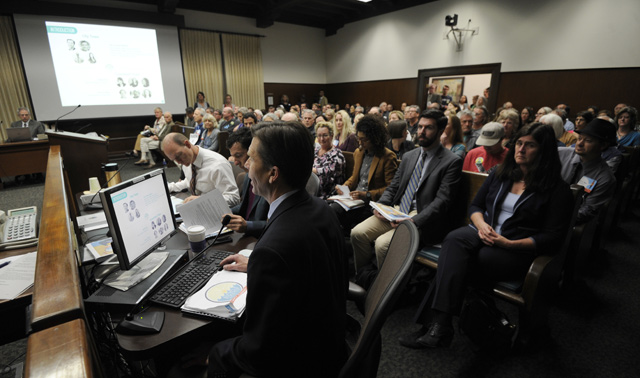
Where the rubber hits the road is over the Micheltorena Street bike lanes. According to advocates, this will provide safe passage for hundreds if not thousands of would-be bike commuters. By creating such a visible, high-profile, safe cycling zone, they contend, significant numbers of motorists will be induced to get out of their cars, and otherwise fearful parents will allow their school-age kids to jump on their bikes.
Opponents have made a strategic point to support the Bicycle Master Plan and embrace the need for an east-west thoroughfare. They insist, however, that Sola Street is a much stronger candidate. Not only is Sola four feet wider than Micheltorena, but it carries about one-tenth the volume of cars and trucks. It can be transformed into a bicycle boulevard, they contend, without any loss of on-street parking. By contrast, they charge that the loss of 85-100 spaces on Micheltorena will create a massive hardship for residents in one of the more densely packed and intensely parking-challenged neighborhoods in the city.
The search for on-street parking will become increasingly desperate as residents drive in expanding concentric circles, hunting for places to park, they say. People who now walk two blocks from car to home contend their trek will expand. For late-shift workers, it will be much worse. For women forced to walk several blocks at night, there will be safety problems. For the 73 businesses in the affected area, they contend the new plan will be economically ruinous, especially for the medical professionals treating those with physical disabilities.
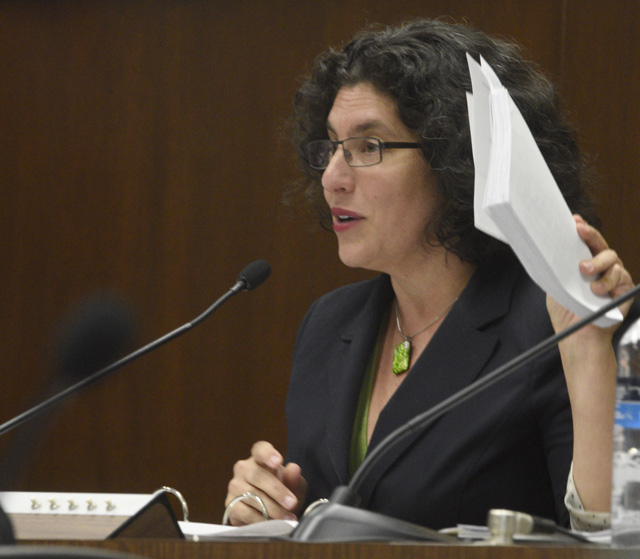
City traffic planners have rejected the Sola Street option as a viable alternative. For Sola to function, they contend, stoplights would have to be installed at De la Vina and Chapala streets. The cost of two lights is $750,000, and that’s money City Hall just doesn’t have. Bicycle advocates such as Ed France of the Bicycle Coalition have balked at having to wait 10-15 years for City Hall to amass the needed funds. Previous master plans called for the creation of a Micheltorena Street bike lane in 1974 and in 1998; none were ever built. Since then, Santa Barbara’s bicycle community has grown in numbers, organizational brawn, and political clout. France and fellow activists have no interest in being put on hold a third time.
During his six-minute address to the council, France was gracious and conciliatory regarding the loss of on-street parking. But he wasn’t going to budge. The first priority of city streets, he said, is to move traffic, not function as a storage yard for parked cars. The pain experienced by Michetorena Street residents would be worth it, he said, because so many more people would ride, thus alleviating congestion — and the demand for parking — throughout the entire city.
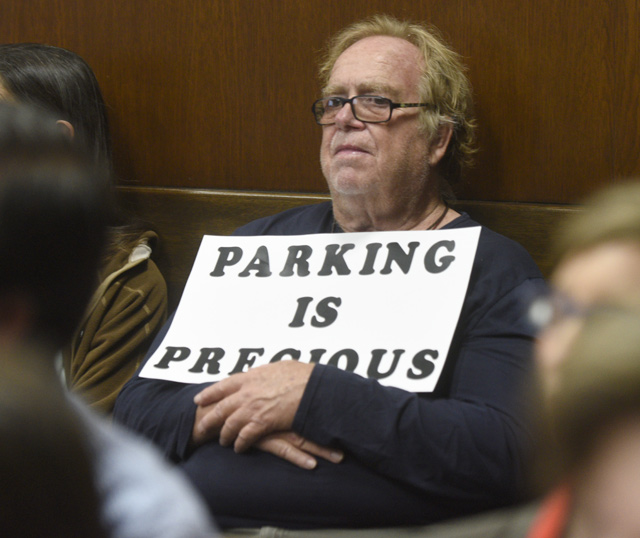
Councilmember Cathy Murillo took it a step further, acknowledging it was no mere “inconvenience” that Micheltorena residents would experience. “You’re going to suffer,” she said. Councilmember Frank Hotchkiss — one of the two councilmembers to oppose the plan — said he was “disgusted” to hear “one of my colleagues ask people out there to suffer.” Hotchkiss showed enlarged photographs of both Micheltorena and Sola streets, arguing that the latter was a more appropriate bike lane.
Councilmember Randy Rowse chimed in, wondering “how Sola Street became the red-haired stepchild in this whole process.” Citing documents released by city traffic planners earlier in the day, Rowse strongly questioned whether the Sola Street alternative really would be more expensive. Those documents revealed that for the Micheltorena bike lane to function, the street would have to be widened at every cross-street intersection in order to accommodate not just the bike lane but the turn lane, as well. This expense, Rowse charged, was never included in the cost comparison between the two streets.
This key new revelation may or may not be the smoking gun giving City Attorney Calonne second thoughts. If so, he’s not saying. But organizers of the Micheltorena Neighborhood Association suspect it might be. Under a new state law, bike master plans are exempt from state environmental review if such plans are restricted to “restriping of streets and highways” and other relatively minimal changes. Superficially, at least, it would appear that a bike plan that “would include intersection widening” expands beyond the narrow confines of what had hitherto been understood as a “restriping” project.



